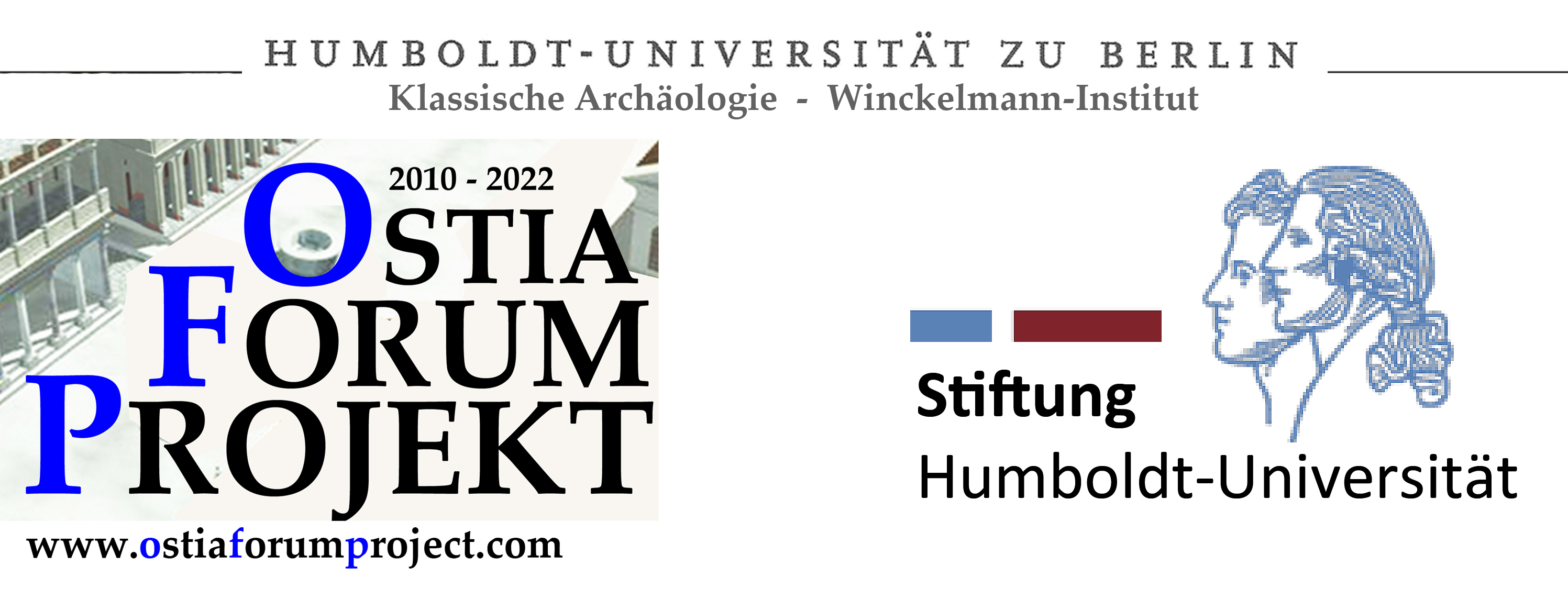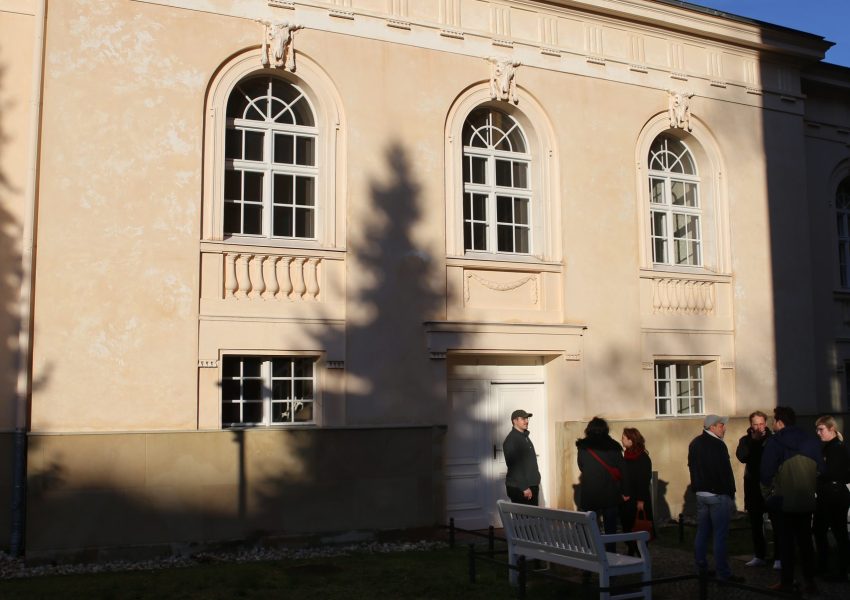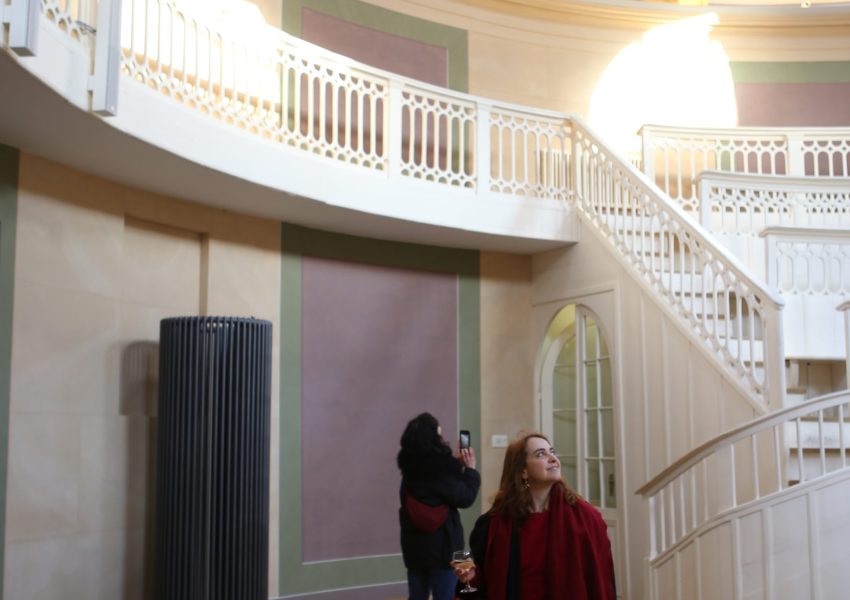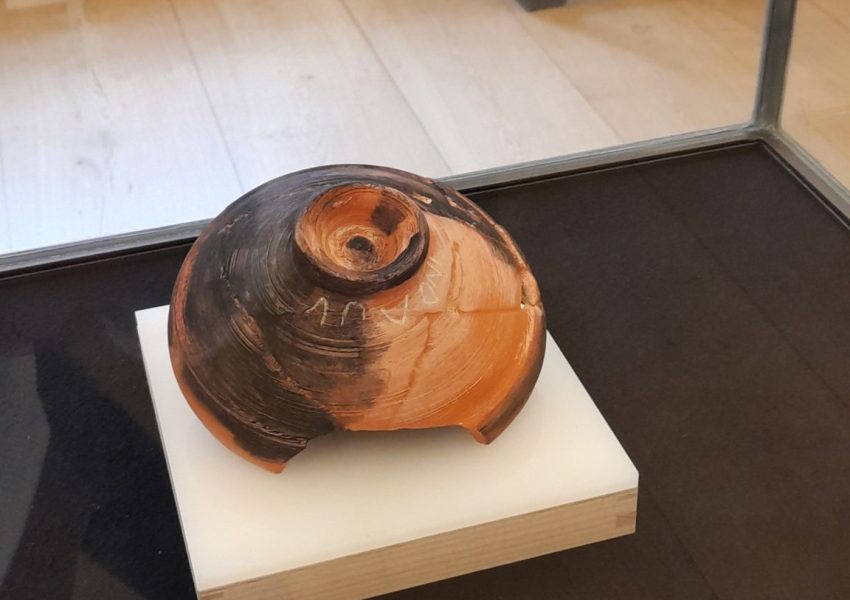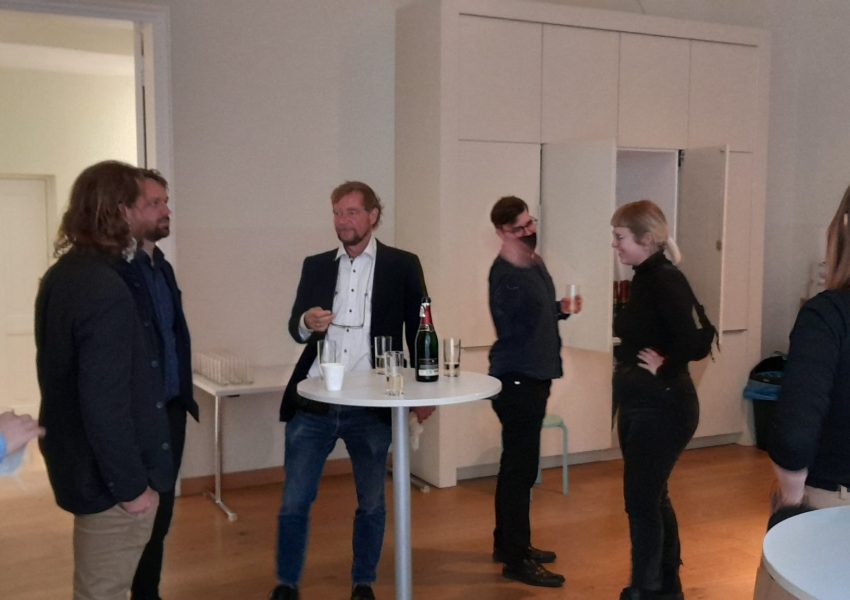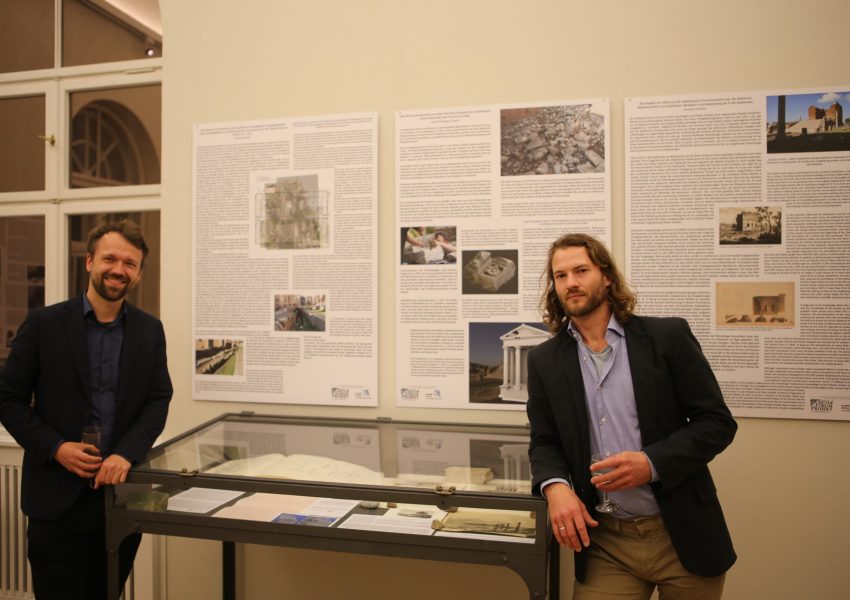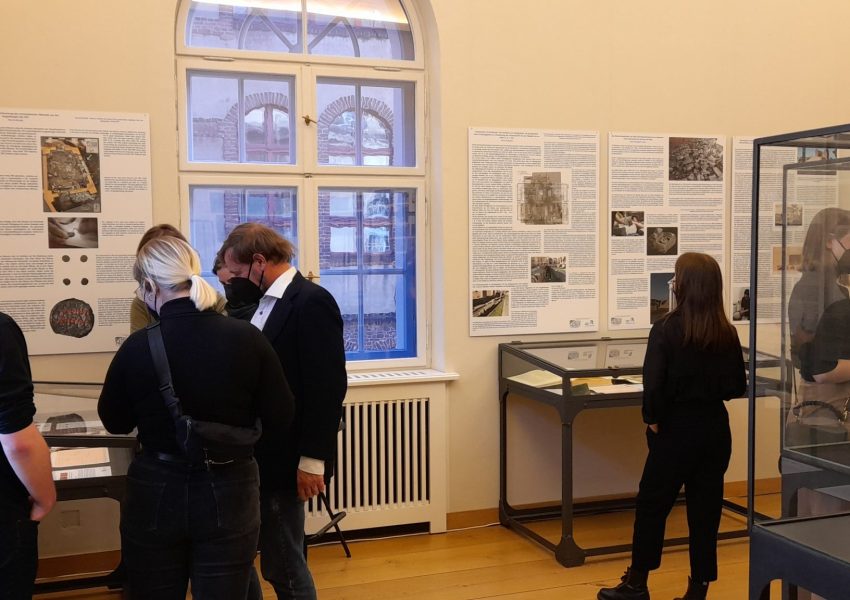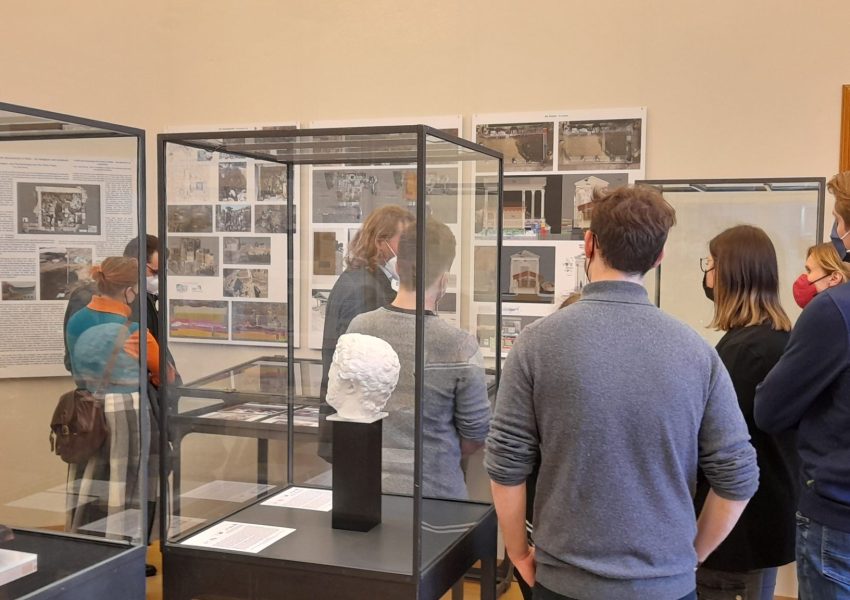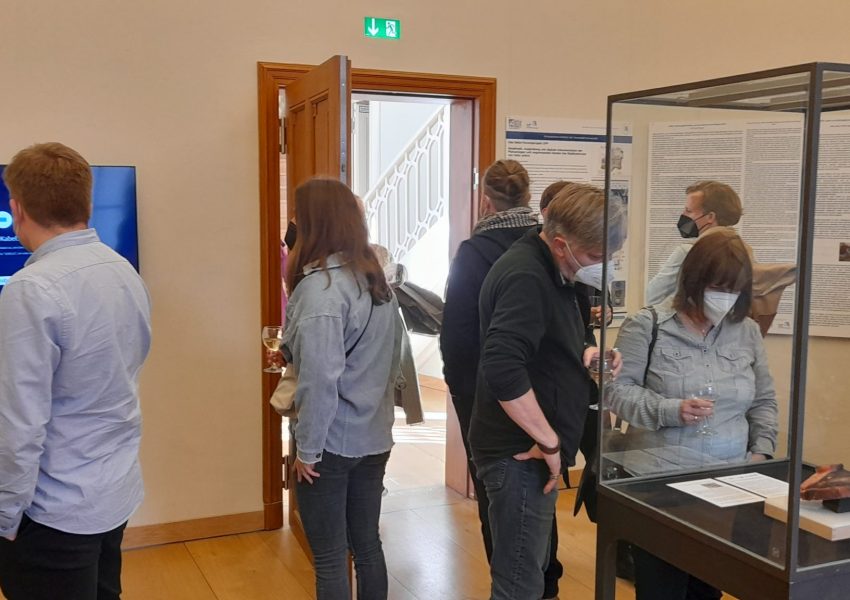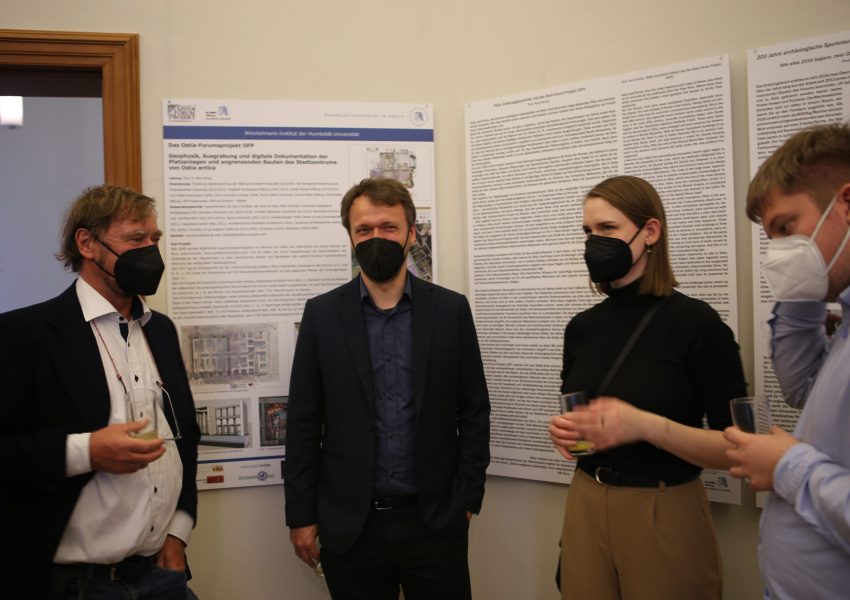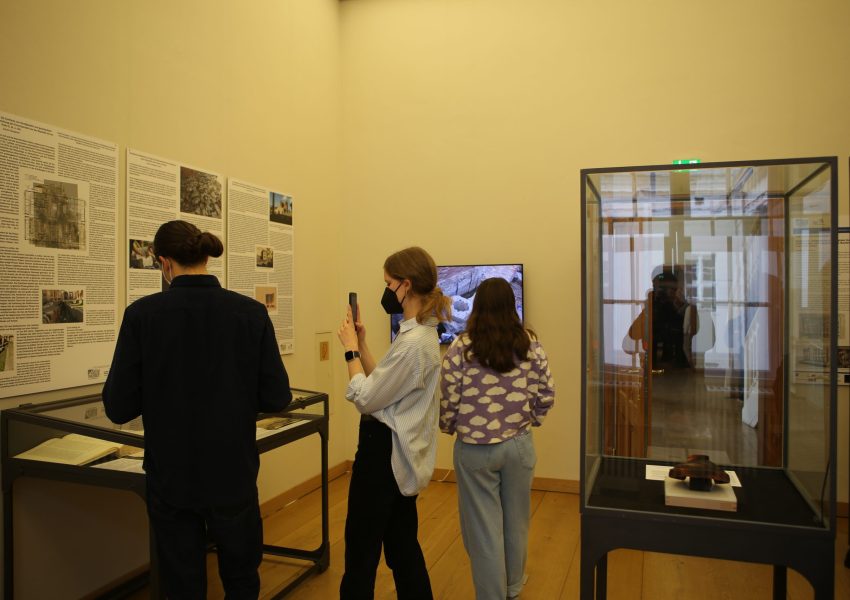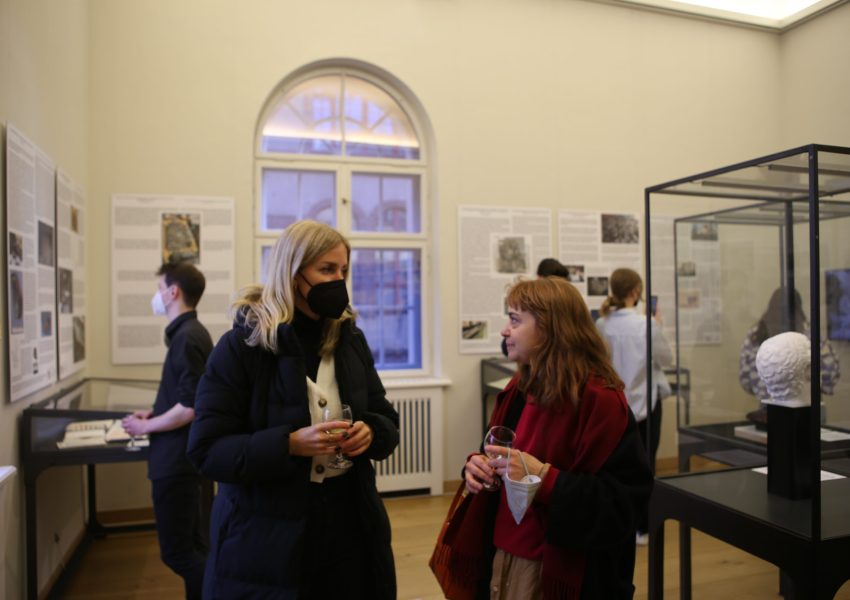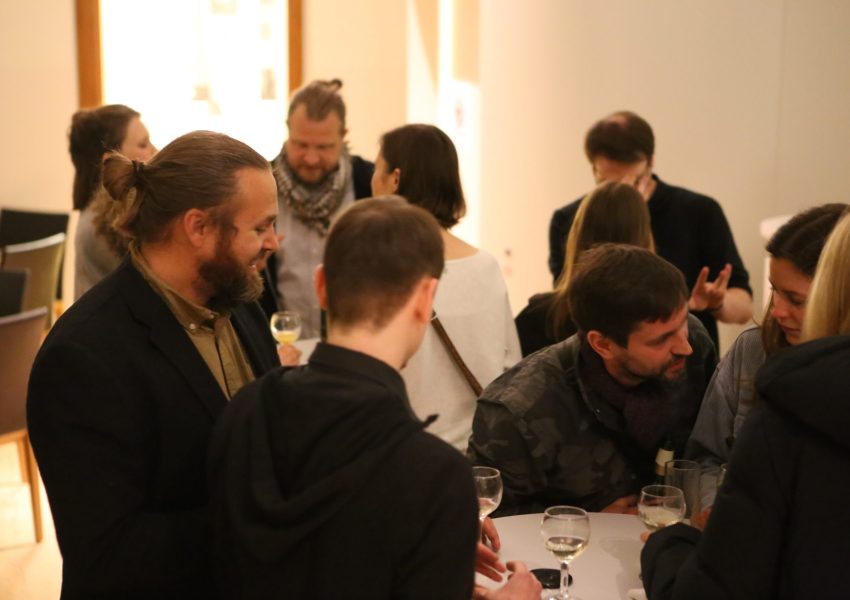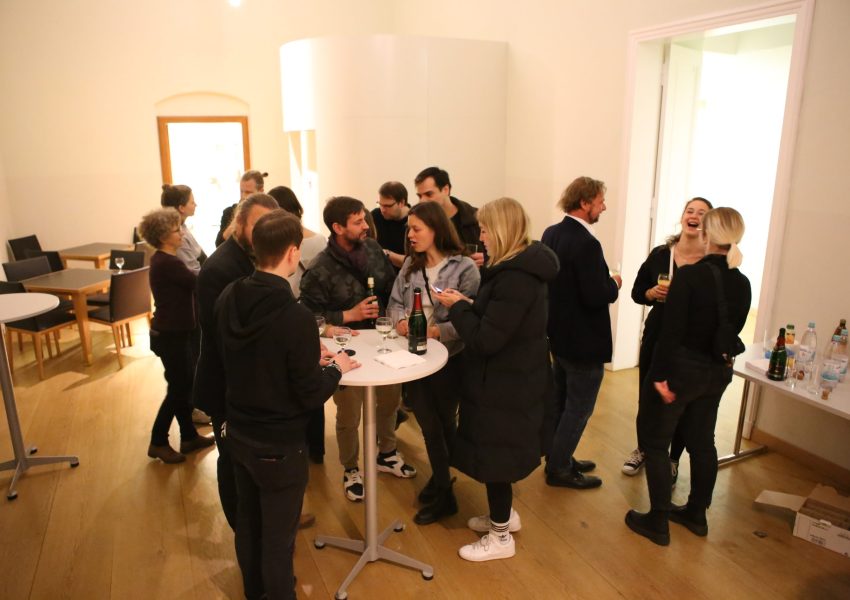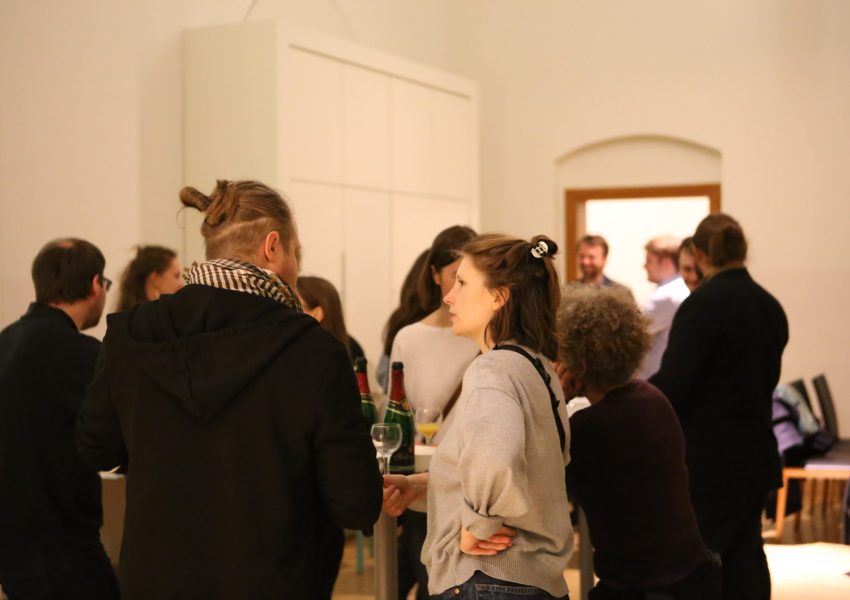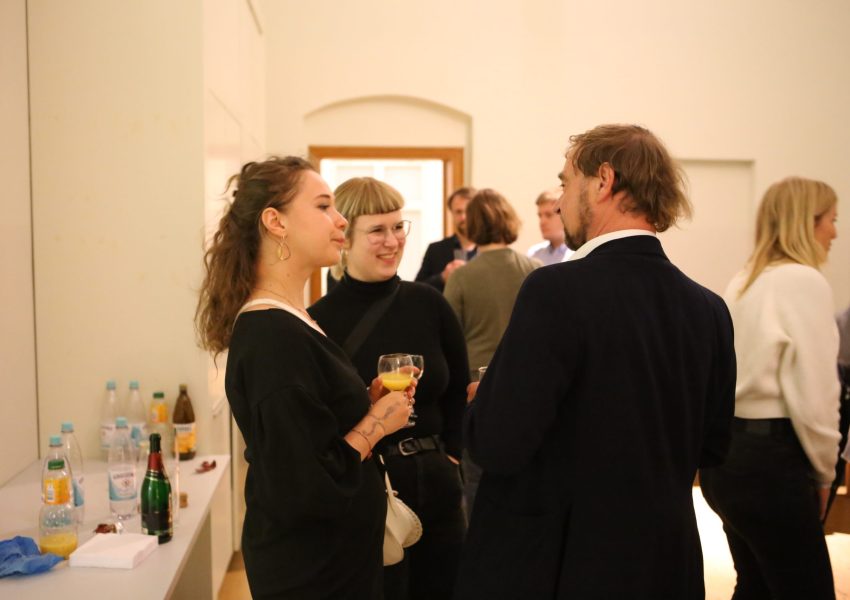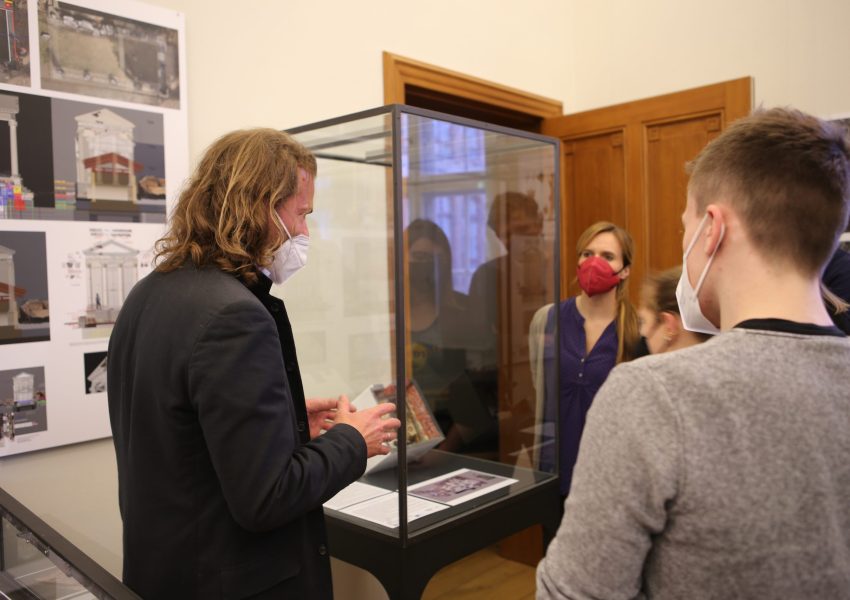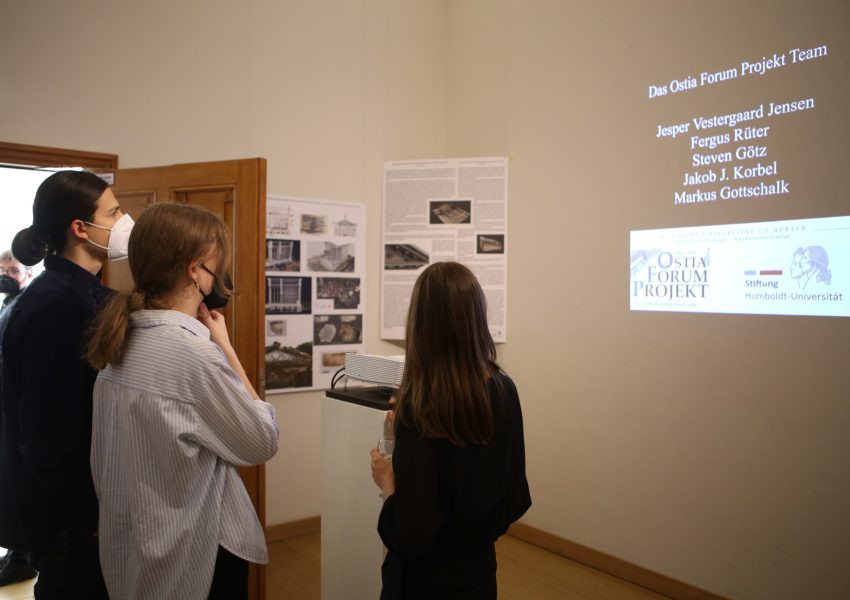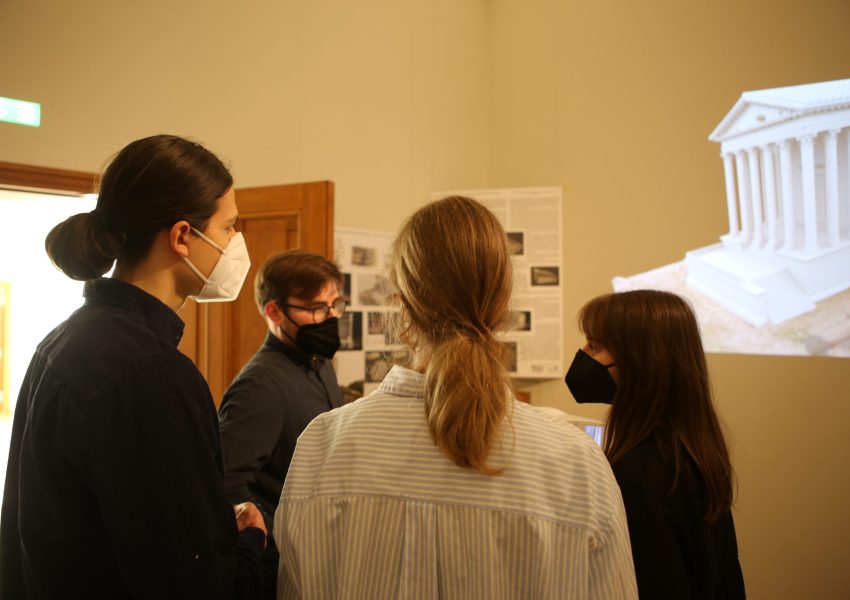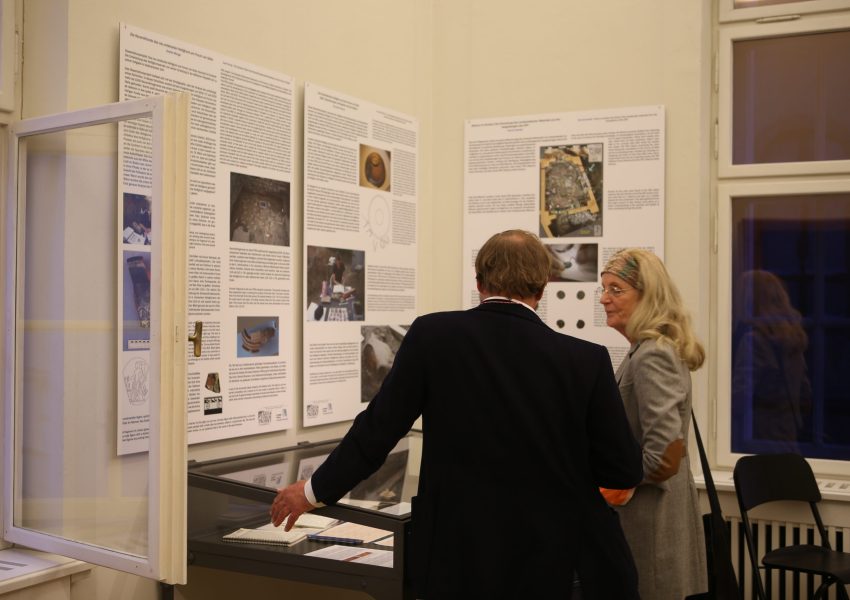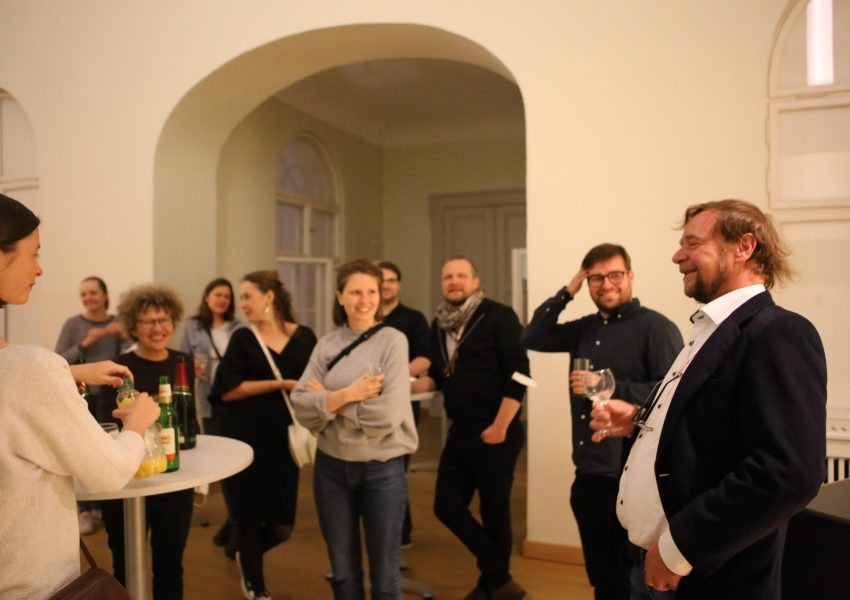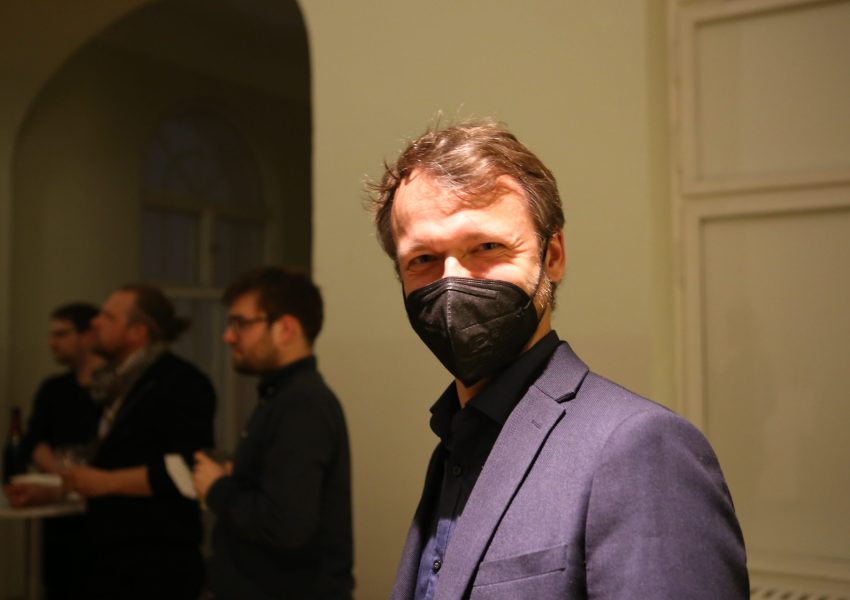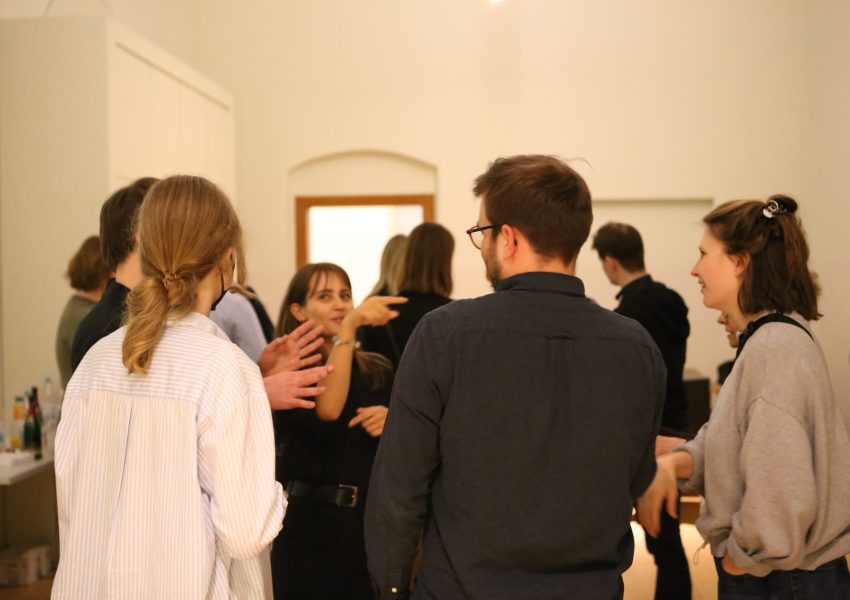On Thursday April 7, 2022, we had the opening of our exhibition at the Tieranatomsiches Teater in Berlin. We were positively surprised of the many visitors who showed up and showed a great interest in the exhibition and in our project. We would therefore like to thank everybody who attended. It went beyond our expectations.
Below, you can see some pictures from the evening.
In the exhibition, we have created two areas with virtual reality. In one, you can experience the story behind the excavation, the altar and experience a sacrifice in the 2nd century BCE in the centre of Rome’s ancient harbour city. In the other, you can have a detailed look at some of our finds, which are of utmost importance in regards to the reconstructions and the overall interpretation. However, the glasses used during virtual reality are only available on selected days, which is why our cooperation partners from the Technical University of Berlin, Jakob and Markus have made two videoes, where you can see the virtual reality world. You can find the video of the excavation and altar here and the video regarding the finds here.
In another room, some objects are exhibited along with the posters explaining the projects. They comprise 3D-prints of a find and the room TFR 2, where we have been excavating since 2016 and where we have found the remains of the altar. The find is a bowl with the inscription A P L O N I (a dedicatory inscription to Apollon). You can read more about the process behind the 3D-printing here.
For the reconstructions in both the videoes that runs in the exhibition as well as the reconstructions in the virtual reality world, we all have to thank Steven Götz. He worked closely with Prof. Dr. Axel Gering and the ph.d. candidates from the Ostia Graduiertenkolleg to create the exact shapes of houses, temples and altars, thus making it look as authentic as possible and most importantly, to make it come as close as possible to what the archaeological evidence revealed. Without his exhaustive work, the exhibition would not have had this important aspect of visualising our hypotheses in a 3D and 4D world – one of the main aims of the Ostia Forum Project.
